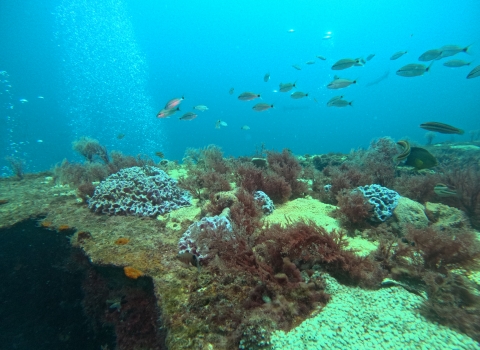Clear Lake NWR has one of the last known greater sage grouse leks in NE California, down from over fifty active leks in the mid 20th century. Since then, sage grouse numbers have declined precipitously. Leks are relatively open areas in the sage steppe traditionally used each spring by male sage grouse to strut and display to attract female grouse. Spring counts of males on the lek has been the traditional way to assess sage grouse populations. Spring of 1992 had over 60 males counted at Clear Lake. Spring 2004 counted only five males there. The next year a working group of government agencies, private landowners and ranchers was formed to determine the cause and try to rebuild populations.
Conifer encroachment into the sage steppe and wildfire were identified as the biggest threats to the grouse in the area. Western juniper trees in NE California have significantly expanded their range . Sage grouse avoid areas with trees since they serve as perches for preying raptors and egg stealing ravens. Wildfire which once kept junipers confined to rocky areas, is now a threat because it destroys sagebrush sagebrush
The western United States’ sagebrush country encompasses over 175 million acres of public and private lands. The sagebrush landscape provides many benefits to our rural economies and communities, and it serves as crucial habitat for a diversity of wildlife, including the iconic greater sage-grouse and over 350 other species.
Learn more about sagebrush which most often doesn’t grow back due to encroachment by non-native annual grasses which green up early in the spring, using up soil moisture. They also dry out earlier in the year thus feeding more frequent and severe wildfires.
The group took a two-pronged approach which both bolsters the sage grouse population and improves the habitat for sage grouse. To bolster the local grouse population in 2005 we caught 10 grouse at Hart Mountain National Antelope Refuge in Oregon, fitted them with tracking devices, then released them at Clear Lake. Over the next ten years, a total 150 grouse were relocated from areas in SE Oregon and NW Nevada. In 2006, we began juniper removal on the refuge, treating 4000 acres within a few years. Forty thousand total acres have since been treated to remove or thin junipers within the leks. By 2017, we counted 34 male grouse at Clear Lake.
Despite our efforts, though, the sage grouse population on the refuge has since declined. The annual grass Medusa head has spread to intact sage brush areas, decreasing habitat and increasing the threat of wildfires. However, we’ve seen some promising results using herbicides on annual grass while creating fire breaks. The threat to the integrity of the sage steppe and populations of sage grouse, pronghorn, mule deer, and the multitude of less visible species that need sage brush is not going away anytime soon. It will likely take generations and breakthroughs in biological control of exotic plant species. The work on the refuge and the surrounding area continues with a study by Oregon State University on the viability of the Clear Lake population with expected completion by 2022.




